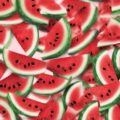Introduction
Are you looking for an easy and delicious way to incorporate more vegetables into your diet? Look no further than vegetable dal! This delightful dish, a staple in many South Asian cuisines, combines lentils with a variety of vegetables, making it a nutrient-packed, flavorful, and versatile meal. In this article, we will explore the benefits of vegetable dal, how to make it, and why it’s the easiest way to eat more veggies.
The Nutritional Benefits of Vegetable Dal
Vegetable dal is a powerhouse of nutrition, offering a range of health benefits:
- High in Protein: Lentils are an excellent source of plant-based protein, essential for muscle repair and growth.
- Rich in Fiber: Both lentils and vegetables are high in dietary fiber, promoting digestive health and keeping you feeling full longer.
- Loaded with Vitamins and Minerals: The combination of lentils and vegetables provides a wide array of vitamins (such as A, C, and K) and minerals (such as potassium, iron, and folate).
- Low in Fat: Vegetable dal is naturally low in fat, making it a heart-healthy choice.
Ingredients for an Easy Vegetable Dal
Making vegetable dal is simple and requires basic ingredients that you can easily find in your kitchen or local grocery store:
- 1 cup red lentils (masoor dal)
- 2 cups mixed vegetables (such as carrots, peas, spinach, and tomatoes)
- 1 onion, finely chopped
- 2 garlic cloves, minced
- 1-inch piece of ginger, grated
- 1 teaspoon turmeric powder
- 1 teaspoon cumin seeds
- 1 teaspoon mustard seeds
- 2 tablespoons vegetable oil
- Salt to taste
- 4 cups water or vegetable broth
Step-by-Step Recipe for Vegetable Dal
Follow these easy steps to make a delicious vegetable dal:
- Prepare the lentils: Rinse the red lentils thoroughly under cold water until the water runs clear. This helps remove any dirt and reduces the cooking time.
- Cook the lentils: In a large pot, combine the lentils and water (or vegetable broth). Bring to a boil, then reduce the heat and let it simmer for about 15-20 minutes until the lentils are soft and cooked through.
- Sauté the aromatics: In a separate pan, heat the vegetable oil over medium heat. Add the cumin seeds and mustard seeds, and let them sizzle for a few seconds. Then, add the chopped onion, garlic, and ginger. Sauté until the onion is translucent and fragrant.
- Add the vegetables and spices: Add the mixed vegetables to the pan, along with the turmeric powder and salt. Cook for about 5-7 minutes until the vegetables are tender but still vibrant in color.
- Combine and simmer: Transfer the sautéed vegetables to the pot with the cooked lentils. Stir well to combine and let it simmer for another 5-10 minutes, allowing the flavors to meld together.
- Serve: Your vegetable dal is now ready to be served! Enjoy it with steamed rice, naan, or enjoy it as a standalone dish.
Why Vegetable Dal Is Perfect for Busy Lifestyles
One of the greatest advantages of vegetable dal is its simplicity and versatility, making it an ideal choice for those with busy lifestyles. Here’s why:
- Quick and Easy: With minimal preparation and cooking time, vegetable dal can be ready in under 30 minutes.
- Meal Prep Friendly: Vegetable dal stores well in the refrigerator and can be reheated throughout the week, making it perfect for meal prepping.
- Customizable: You can easily swap out vegetables based on what you have on hand, making it a versatile dish that reduces food waste.
- Budget-Friendly: Lentils and vegetables are generally inexpensive, making vegetable dal a cost-effective meal option.
FAQ
1. Can I use other types of lentils for vegetable dal?
Yes, you can use other types of lentils like green lentils, yellow lentils, or split peas. Keep in mind that different lentils may have different cooking times.
2. How can I make my dal creamier?
For a creamier consistency, you can add a splash of coconut milk or blend a portion of the cooked dal before adding the vegetables.
3. What can I serve with vegetable dal?
Vegetable dal pairs well with steamed rice, quinoa, naan, or even a fresh salad for a complete meal.
4. Is vegetable dal suitable for freezing?
Yes, vegetable dal can be frozen. Allow it to cool completely before transferring it to airtight containers or freezer bags. It can be stored in the freezer for up to 3 months.
5. How can I make my dal spicier?
If you prefer a spicier dal, you can add chopped green chilies or a pinch of red chili powder while sautéing the aromatics.
Conclusion
Vegetable dal is truly the easiest way to eat more veggies while enjoying a delicious and nutritious meal. Its simplicity, versatility, and health benefits make it a perfect addition to any diet. Whether you’re a seasoned cook or a kitchen novice, give this vegetable dal recipe a try and savor the goodness of wholesome ingredients.









